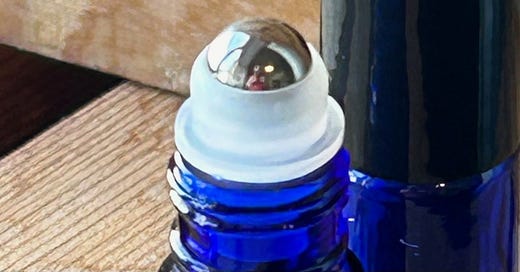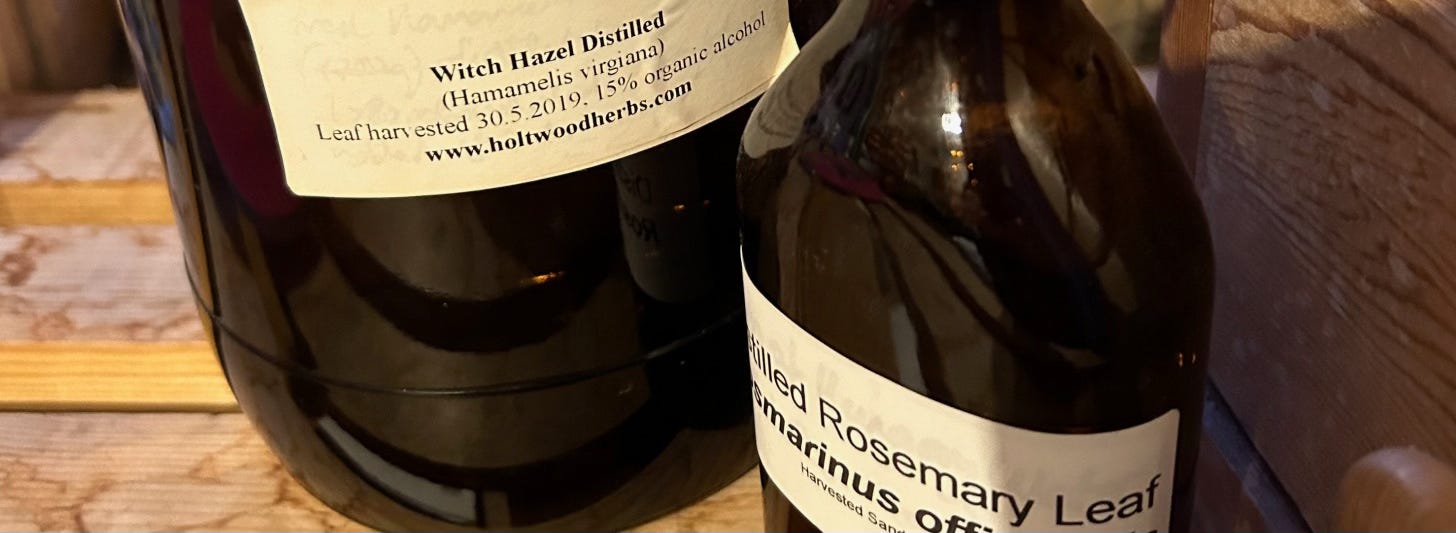MAKING RECIPES #7 Smelling gorgeous rather than sweaty?
Ideas for how a forest garden can provide abundant sources for making a herbal deodorant!
As the weather warms up I have been thinking about sweat and how to deal with it! The forest garden can provide an abundance of bark and leaf for plant extracts that can be used in recipes for deodorants. Here, I outline developing a recipe for a deodorant spray with rosemary and witch hazel distilled waters, with more suggestions about possible plant sources, and a further recipe for deodorant gel that suits rollerball application.
Why we need deodorants - surely it is obvious!
Deodorants are designed 'to combat body odour'. Despite the blame placed on sweat, it is not this that smells but the effect of bacteria on fats and proteins in the sweat. Although sweat produced by some glands (there are three types – apocrine, eccrine, sebaceous) may consist mostly of salt and water, other forms contain lipids and proteins. It is the areas of sweat glands associated with hair follicles in arm pits and groin that produce the oily fluids most likely to end up smelly. These are metabolised by bacteria causing a build-up of odorous molecules such as volatile fatty acids (goat-like) and sulphur compounds (onion-like). Washing daily and after exercise plus shaving and loose clean clothes all help to control these effects and reducing the resulting body odour. Other helps to reduce odours are lessening anxiety, using natural fibres, and avoiding diets high in sugar and fats. To prevent the bacteria that cause body odour you could use acidic solutions, such as lemon juice and cider vinegar, or alkaline applications such as soap. Since the normally helpful bacteria will repopulate on the skin these methods do have to be repeated on a regular basis.
Is there a problem with antiperspirants?
The other way to combat sweat smells is to block the production of sweat, though this is not ideal as a long-term solution. Antiperspirants clog the sweat glands and they usually contain aluminium chloride that forms a gel-like plug in the ducts. An antiperspirant may also contain antibacterials that affect the normal bacterial population of the skin. It is not surprising that many people seek alternatives to antiperspirants as additives in commercial deodorants such as aluminium and preservative parabens have been suspected of causing cancer or hormonal disruption, though evidence is still unclear. So alternative approaches using plant extracts have become increasingly popular.
Using distilled rosemary and witch hazel as a spray
Some years ago I began to wonder what to do with the quantities of distilled waters that were being produced from our forest garden. Both witch hazel (Hamamelis virginiana) and rosemary (Salvia rosmarinus previously known as Rosmarinus officinalis) can produce abundant supplies of leafy twigs for distilled waters, also known as hydrolats. Developing a use as a deodorant spray seemed an ideal way forward. The combination of rosemary and witch hazel in our spray recipe has a lovely aromatic smell. Small amounts of alcohol are added for preservative effect and can be useful in controlling bacteria and having a drying or astringent effect. Vegetable glycerine or glycerol is sweet and syrupy and used only in small amounts, it can be soothing on the skin as it attracts moisture to the surface layer of the skin (but not too much as it can be sticky).
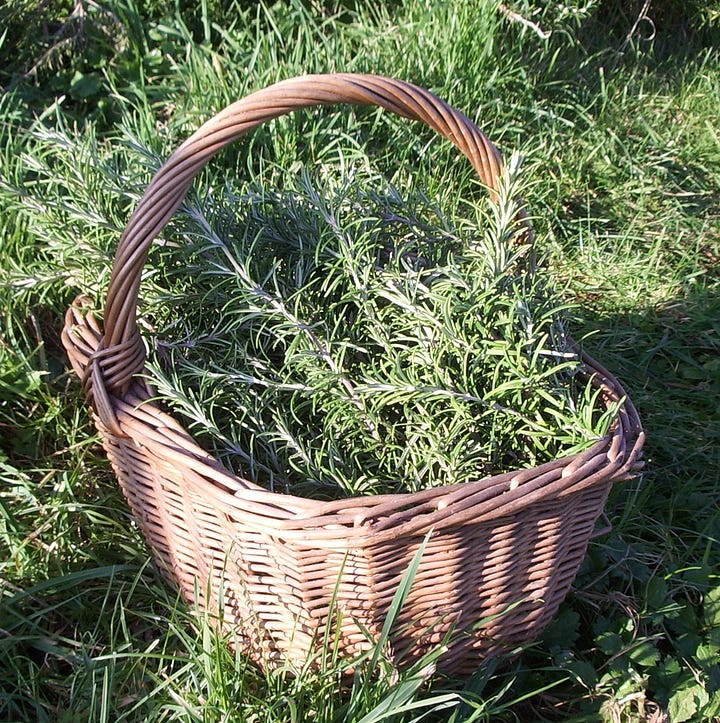
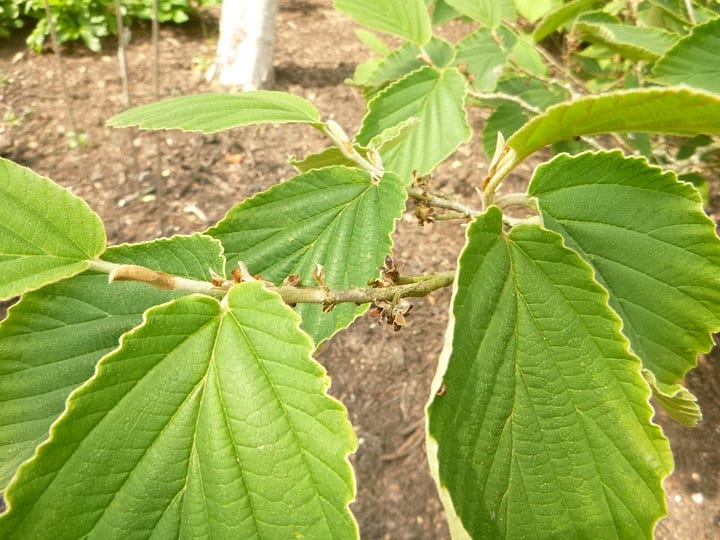
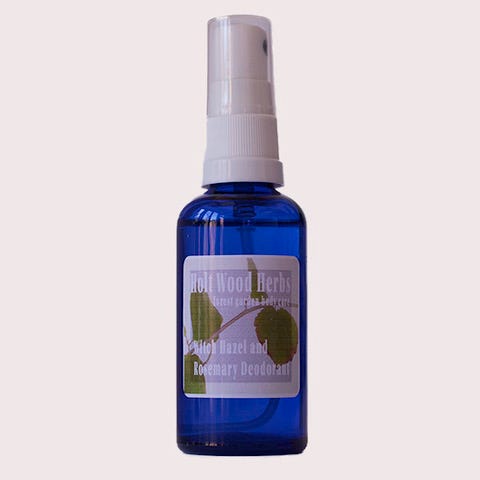
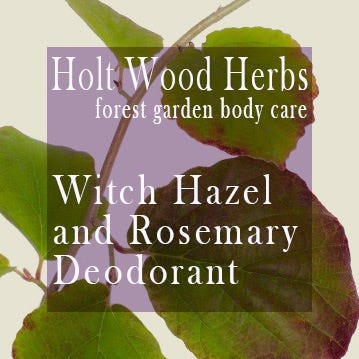
Recipe for Rosemary and Witch Hazel Deodorant Spray
100 ml distilled witch hazel (Hamamelis virginiana) water
100 ml distilled rosemary (Salvia rosmarinus) water
100 ml vodka (40% alcohol)
10 ml glycerol
Mix all of the ingredients well together and keep in a glass bottle and label. For use, decant into a spray bottle and apply as needed, usually several times a day. Keeps well for at least 12 months.
MAKING RECIPES # posts
Are you keen on making herbal remedies? Do you want to capture the best healing actions of the plants you can forage or grow? Are you itching to create, infuse, mix, distil, bottle, and gift or sell these botanical wonders? This series of posts, MAKING RECIPES #, gives the inside story on growing, harvesting, making, preserving, selling healing remedies and body care products from the medicinal forest garden. The MAKING RECIPES # series of posts are available in full to paid subscribers. By writing these posts I aim to build up material towards another book publication. As a paid subscriber you can see these posts in full and receive all of this written material prepublication! You will also help me in supporting the Medicinal Forest Garden Trust.
Going further, to make a deodorant gel suitable for a rollerball…
Keep reading with a 7-day free trial
Subscribe to Medicinal Tree Woman to keep reading this post and get 7 days of free access to the full post archives.


